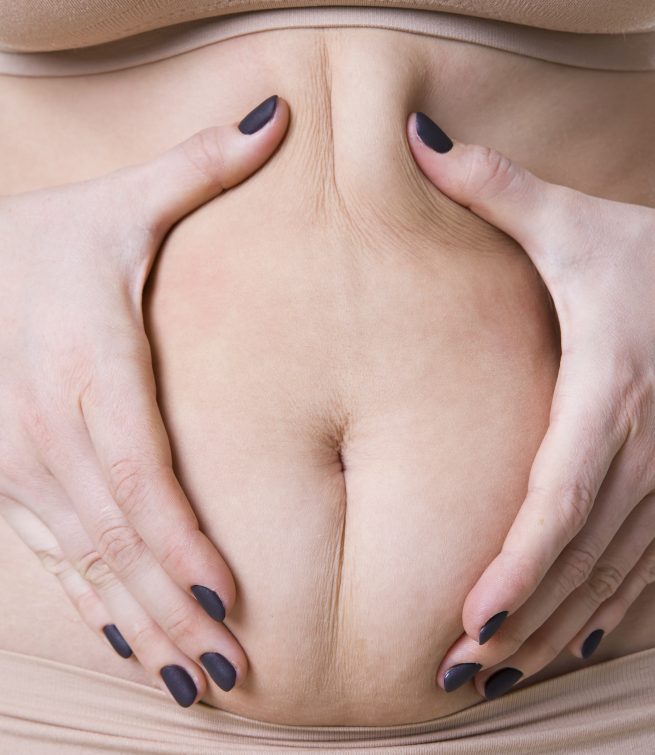Abdominoplasty
Abdominoplasty is a procedure used to remove excess skin and fat from the lower abdomen. This is one of the most common aesthetic surgery procedures.
Excess tissue may appear after a loss or fluctuation of weight, pregnancy, bariatric surgery, lifestyle change or even aging.

Conduct of the Procedure
Two types of procedure are available: complete abdominoplasty and mini abdominoplasty.
Complete abdominoplasty an incision is made across the lower abdomen from hipbone to hipbone. This technique is used to remove as much skin tissue as possible, tighten abdominal muscles and reposition the navel.
Mini abdominoplasty a much smaller incision is made. Excess skin is removed only from the area located below the navel. The latter is not repositioned and muscles are usually not tightened. This technique is appropriate for people with a small and well located fat deposit.
Liposuction is often used along with abdominoplasty to achieve optimal result.
Abdominoplasty is a one- to three-hour day surgery. It is carried out under general anesthesia to maximize comfort. One or two drainage tubes are put in place during the surgery. These tubes help decrease the risk of seroma and hematoma after surgery. They are removed during a follow-up visit. A chest girdle will also be installed during the procedure.
Recovery Period
The girdle installed during the procedure must be worn at all times during the first two weeks, and only at night for two more weeks. It can be removed for wound care and to take a shower.
We recommend that you limit your activities in the first three days after the surgery. Normal activities will be gradually resumed. Most restrictions will be lifted four to six weeks after the surgery, depending on the type of abdominoplasty carried out.
Patients must rest during the first days, but they must also move their legs, walk regularly, and drink a lot of water to prevent blood clots in their legs (thrombophlebitis).
During the first week, walking in a slightly flexed position is important to avoid putting strain on the wound.
It is normal to feel some pain after a surgery, especially after the plication (folding) of the abdominal muscles.
Follow-up
Regular follow-up visits will be scheduled to ensure no complications occur. These visits are an opportunity to assess the result and give further instructions.
Minor Complications
Bleeding, hematoma, and bruising: in rare cases, significant bleeding may occur after the surgery. A surgery may be required to treat this problem.
Seroma (buildup of fluid under the skin): in general, this complication goes away on its own, but one or a few aspiration procedures may be needed.
Infection (superficial cellulitis or deep abscess): rare complication. This problem is usually treated with antibiotics. Surgery may be needed to treat abscesses.
Loss of skin sensation in the abdomen area: many small nerves to the skin are being cut during the procedure. A very slight loss of sensation may persist in the surgical wound area. It generally disappears over time.
Skin necrosis: this complication is more frequent in patients who smoke. Treated with dressings, it can delay healing by a few weeks.
Surgical wound dehiscence: may occur as a result of excessive strain on the wound or rapid mobilization. Dehiscence is usually treated with frequent dressing changes.
Hypertrophic scar: a thick scar. Various treatments can be used if it occurs.
Asymmetry: may occur more frequently in the navel area.
Thrombophlebitis and pulmonary embolism: a serious but rare complication. Following the doctor’s instructions help decrease the risks.
After the Surgery
If you have abdominal stretch marks, many of these will be removed during the procedure; however, some may remain, especially if they are located above the navel.
It is recommended to maintain a stable weight before undergoing abdominoplasty in order to achieve the best possible result.
Abdominoplasty should be carried out when the patient is finished having children.
A small vertical scar to the lower abdomen may appear if the lifting does not result in full skin removal around the navel.